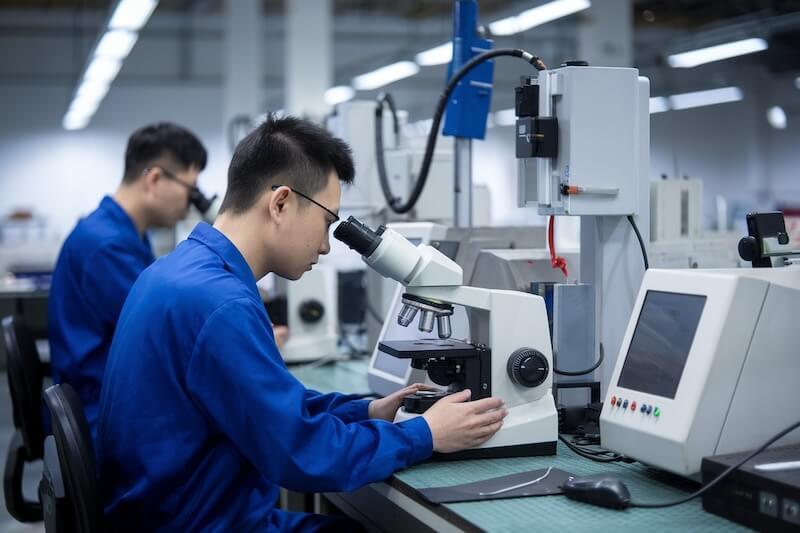Introduction
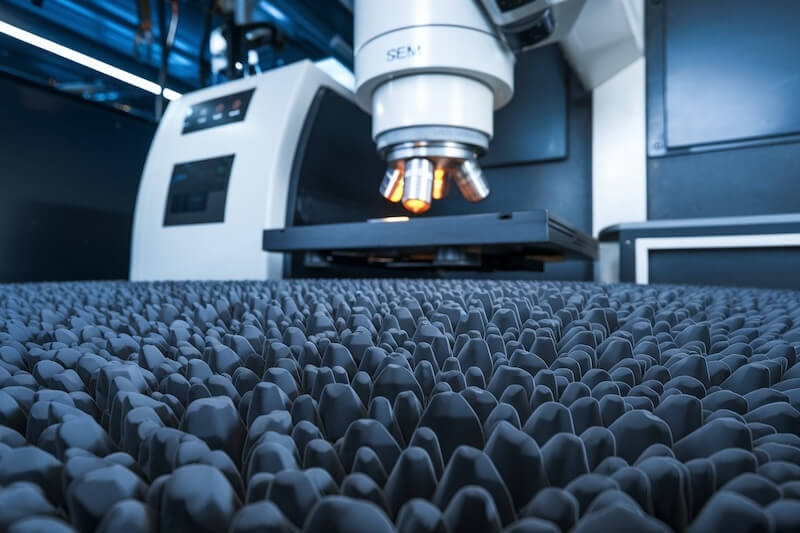
In the tungsten carbide industry, understanding the material’s behavior, performance, and durability relies heavily on analyzing its microstructure. The microstructure of a material refers to the arrangement of its grains, phases, and defects at the microscopic scale. For tungsten carbide, the microstructure significantly influences its key properties such as hardness, wear resistance, and toughness. By analyzing the microstructure, manufacturers and engineers can optimize the production process, improve the performance of components, and ensure the high quality of tungsten carbide tools and wear parts. This article provides a detailed overview of microstructure analysis in the tungsten carbide industry, including its importance, methods, and how it relates to product performance.
What is Microstructure Analysis?
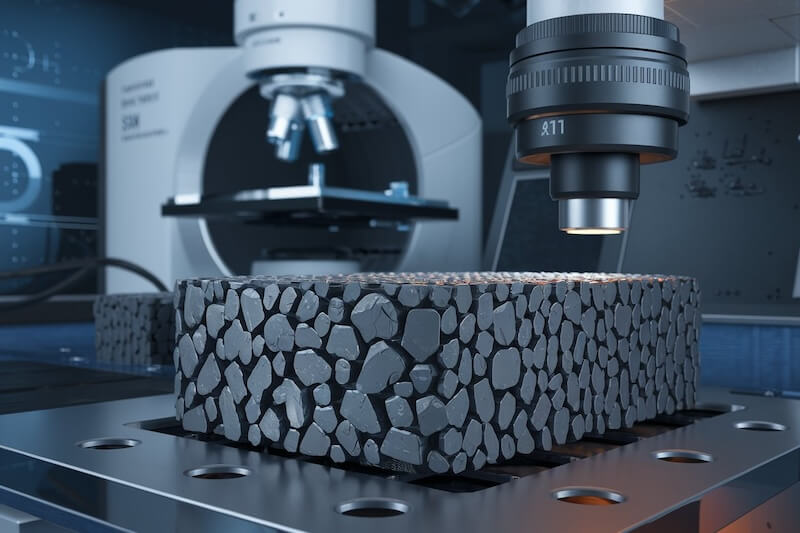
Microstructure analysis involves the study of the fine-grained structure of materials at a microscopic or sub-microscopic level. In the case of tungsten carbide (WC), its microstructure consists of tungsten carbide grains embedded in a cobalt binder phase. The arrangement, size, and distribution of these phases play a significant role in determining the material’s mechanical properties.
In tungsten carbide, the microstructure’s key elements include:
WC (Tungsten Carbide) Grains: The hard, wear-resistant particles that make up the majority of the material.
Co (Cobalt Binder): The metal matrix that holds the tungsten carbide grains together, providing toughness and impact resistance.
Porosity: Tiny voids or gaps within the material that can affect its overall density and performance.
Carbide Phases: Additional phases such as mixed carbides or carbide compounds that may form in the material during production.
Microstructure analysis allows engineers to understand how these elements are arranged and interact with each other, directly influencing the material’s mechanical performance.
Why is Microstructure Important in Tungsten Carbide?
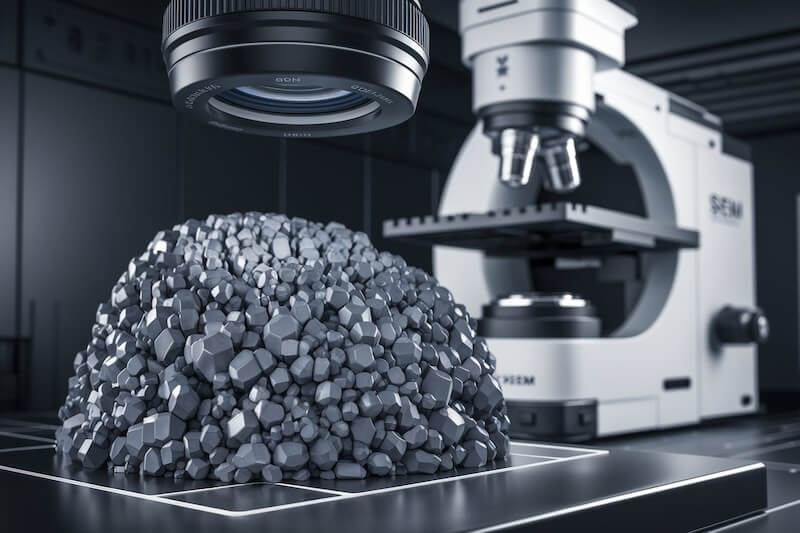
Tungsten carbide is primarily known for its exceptional hardness and wear resistance, making it ideal for high-performance tools and industrial applications. However, its performance is not solely dictated by the composition of the material. The microstructure plays a crucial role in determining how well the material performs under different conditions. The following points highlight why microstructure analysis is so important in the tungsten carbide industry:
Impact on Mechanical Properties: The distribution, size, and volume fraction of the WC grains and the cobalt binder phase influence the hardness, toughness, and wear resistance of the material. A more uniform microstructure generally leads to better mechanical performance.
Optimization of Manufacturing Processes: By understanding the microstructure, manufacturers can adjust processing parameters, such as sintering temperature and pressure, to control the grain size and phase distribution. This can help achieve the desired properties for specific applications, such as cutting tools or wear-resistant components.
Durability and Reliability: Tungsten carbide’s microstructure directly affects its ability to withstand extreme conditions such as high temperatures, mechanical stress, and abrasive environments. Analyzing the microstructure allows for better control over the material’s ability to endure these conditions.
Defect Detection: Microstructure analysis can reveal defects such as porosity, inclusions, or cracks that could compromise the performance and integrity of tungsten carbide components. Early detection of these issues during production allows for corrective actions before the product reaches the end user.
Methods of Microstructure Analysis in Tungsten Carbide
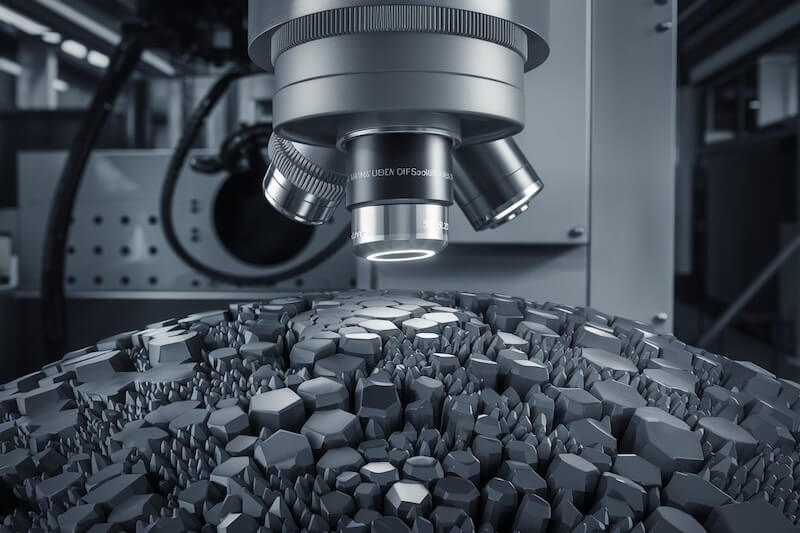
Various techniques are used to analyze the microstructure of tungsten carbide, each providing valuable insights into different aspects of the material’s structure. These methods can help manufacturers refine their production processes and achieve the desired material properties. The most commonly used techniques include:
Optical Microscopy
Optical microscopy is a widely used technique for examining the surface microstructure of tungsten carbide. It involves shining light on the material and capturing the reflected light through lenses to produce an image. This method allows for the observation of the grain structure, phase distribution, and overall surface quality at a magnification of up to several thousand times. Optical microscopy is typically used to observe larger features such as grain boundaries and phase distributions, and it provides a quick and cost-effective way to analyze the material.
Scanning Electron Microscopy (SEM)
SEM is a more advanced technique that provides high-resolution imaging of the material at much greater magnifications (up to millions of times). SEM uses electrons rather than light to create an image, allowing for detailed analysis of the tungsten carbide’s surface topography and microstructure. This method can reveal fine details such as surface defects, porosity, and individual grain boundaries, making it ideal for analyzing the fine microstructure of tungsten carbide materials.
Energy Dispersive X-ray Spectroscopy (EDS)
Often coupled with SEM, EDS is used to analyze the chemical composition of different phases in the tungsten carbide microstructure. By detecting characteristic X-rays emitted from the material when bombarded by electrons, EDS provides a detailed chemical map that can identify the distribution of elements such as tungsten, carbon, and cobalt. This is useful for understanding the phase composition and quality of the carbide binder matrix.
X-ray Diffraction (XRD)
XRD is a technique that identifies the crystalline phases within the tungsten carbide material by analyzing the way X-rays are diffracted when passed through the material. It provides information about the phase composition, crystallinity, and any residual stresses present in the material. XRD is often used to confirm the presence of specific carbide phases in tungsten carbide, which can significantly influence its mechanical properties.
Transmission Electron Microscopy (TEM)
TEM offers extremely high-resolution imaging at the atomic scale, making it possible to study the arrangement of atoms within the tungsten carbide structure. TEM is typically used for research purposes or to investigate the fine details of the carbide microstructure that are beyond the resolution of SEM. TEM can provide insight into defects, phase boundaries, and other microscopic features that affect the material’s behavior.
Microhardness Testing
Microhardness testing involves indenting the surface of a material with a diamond pyramid or Vickers indenter to measure its hardness at specific points. This technique is particularly useful for measuring the hardness of individual phases within a tungsten carbide sample, such as the WC grains and the cobalt binder. The hardness distribution within the material provides valuable information about the microstructure’s uniformity and overall quality.
How Microstructure Affects the Performance of Tungsten Carbide
The microstructure of tungsten carbide directly influences its performance in a variety of ways:
Grain Size
Smaller, more uniform grains generally result in higher hardness and wear resistance. This is because smaller grains increase the material’s surface area and reduce the number of grain boundaries, which in turn improves the material’s resistance to wear and fracture.
Phase Distribution
The distribution of tungsten carbide (WC) and cobalt phases in the microstructure affects the material’s toughness and wear resistance. A higher concentration of WC grains generally improves hardness, while a higher concentration of cobalt enhances toughness and ductility. Optimizing the balance between these phases is crucial for achieving the desired mechanical properties for different applications.
Porosity and Inclusions
Porosity within the tungsten carbide can weaken the material, reducing its wear resistance and toughness. Inclusions, such as non-metallic particles or contaminants, can also cause defects that lead to failure in high-stress applications. Microstructure analysis helps identify and minimize these defects during production.
Applications of Microstructure Analysis in Tungsten Carbide
Microstructure analysis is used extensively across industries that rely on tungsten carbide components, including:
Tooling and Cutting Tools
Tungsten carbide is widely used in cutting tools, drills, and dies due to its hardness and wear resistance. Microstructure analysis helps optimize the grain size and phase distribution to improve cutting performance and tool life.
Wear Parts
Tungsten carbide is also used for manufacturing wear parts, such as pumps, valve components, and bearings. The material’s ability to withstand abrasion and extreme conditions is enhanced by a well-controlled microstructure.
Aerospace and Automotive Industries
In the aerospace and automotive sectors, tungsten carbide is used for critical components like turbine blades and engine parts. Microstructure analysis ensures that these components have the necessary strength, toughness, and fatigue resistance.
Conclusion
Microstructure analysis is an essential tool in the tungsten carbide industry, providing valuable insights into the material’s properties and behavior. Understanding the microstructure allows manufacturers to fine-tune production processes, enhance material performance, and ensure the durability and reliability of tungsten carbide components. With the help of advanced analytical techniques such as SEM, XRD, and EDS, the tungsten carbide industry can continue to meet the high demands of various industrial sectors, from tooling and wear parts to aerospace and automotive applications.

